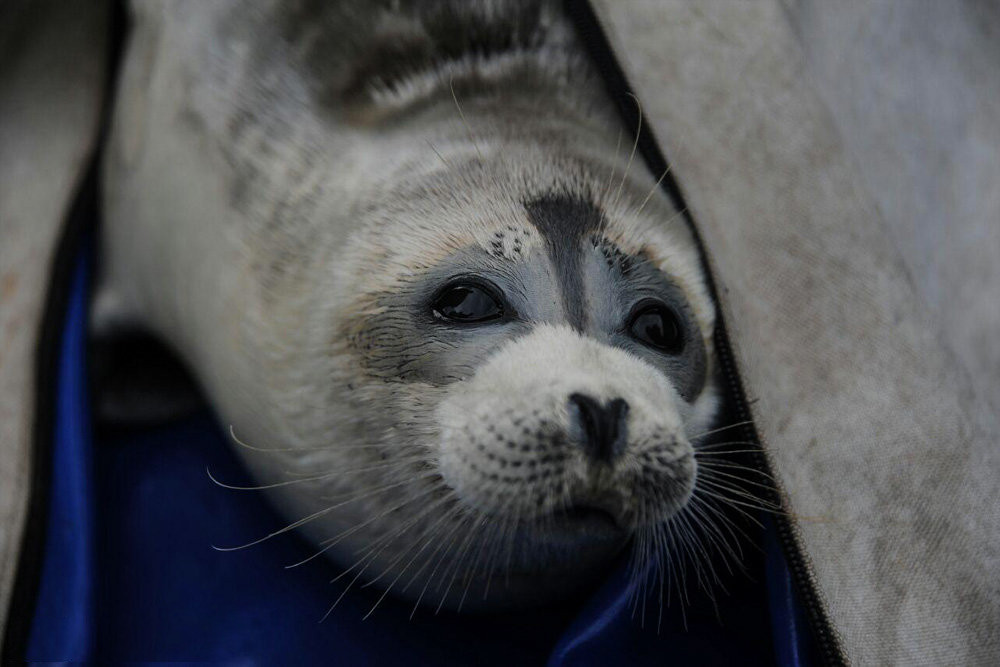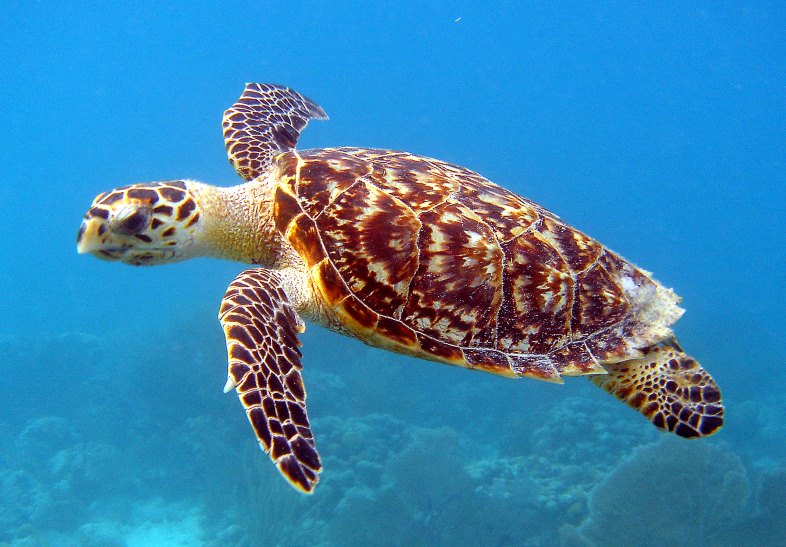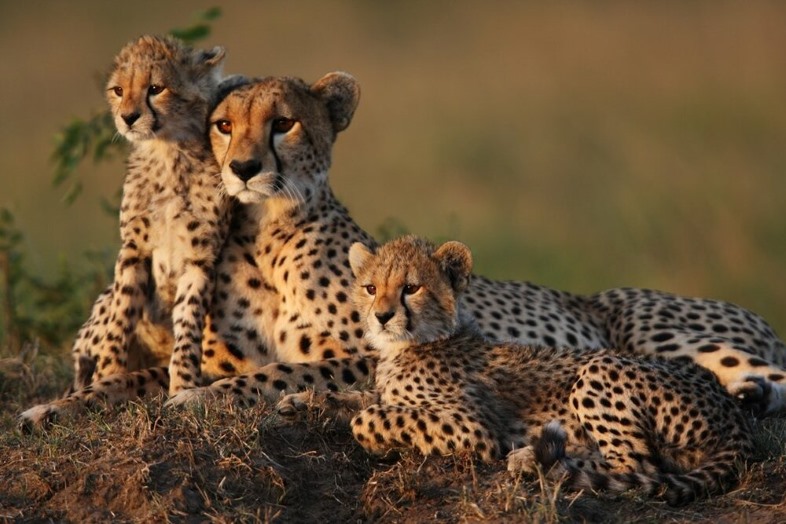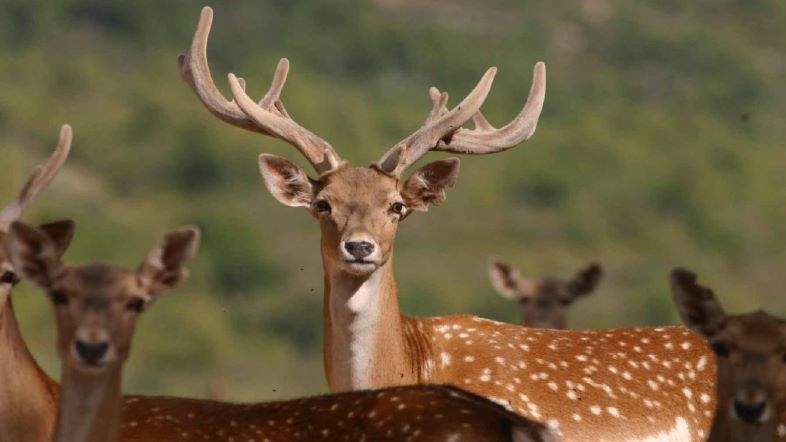The Caspian seal is the only marine mammal in the Caspian Sea, and is found no where else in the world. At the start of the 20th century there were around 1 million Caspian seals. It is an iconic animal for the region, and is a key indicator for the health of the Caspian Sea, upon which the livelihoods of thousands of people depend.
Today the population has fallen by more than 90% and continues to decline. The Caspian Sea faces many human pressures and ecological changes, so urgent conservation measures are needed to prevent the disappearance of this key component of the Caspian ecosystem.
Origins
The origins of the Caspian and Baikal seals are still debated by scientists. It used to be thought that the ringed seals isolated in Lakes Ladoga, Saimaa, Caspian and Baikal were populations of Arctic ringed seals ((Pusa hispida) which became landlocked in lakes when the ice of the last ice age retreated about 11 thousand years ago. This may, in fact, be the case for the Ladoga and Saimaa seals which are considered to be only subspecies of the Arctic ringed seal. However, recent analysis of mitochondrial DNA suggests that the origin of the Baikal and Caspian seals may be older. It is now thought that Caspian and Baikal seals may have had a common origin with all the seals in the Phocina group (which includes the present-day harbour and grey seals, as well as the ringed seal species), and may have migrated across the continent to the Caspian and Baikal lakes in the late Pliocene, i.e. about 2-3 million years ago. The Caspian seal may even be more closely related to the grey seal than to the Baikal and Arctic ringed seals. All of these species are ice-breeding in origin and have pups which have an infantile (lanugo) white coat (although present-day harbour seals no longer breed on ice, and the lanugo coat is generally shed just before birth).
The Caspian Sea is just under 400,000 square km, and is the largest inland sea in the world. It is weakly saline, with the shallow northern basin (fed by the Volga and Ural rivers) being almost fresh water, while the deeper middle and southern basins are about one third of oceanic salinity. The northern basin is no more than a few metres deep, and freezes in the winter, thus providing the seals with their ice-breeding habitat.
Life history
Almost all Caspian seals are born on the winter ice-field, which covers the shallow northern Caspian between January to March. Unlike other ringed seal species, the pups are rarely hidden in lairs, because there is usually not enough snow for lairs to be excavated. Most pups are therefore exposed on the surface of the ice, with their mothers close beside them. Newborn pups are protected from the cold by a long white ‘lanugo’ coat. If this coat gets waterlogged, pups may freeze to death on the exposed ice, so it is important that newborn Caspian pups should not enter the water.
The ice is usually about 20-30 cm thick, and mothers gnaw water access holes in the ice through which they enter and leave the water. However, the white-coated pups do not go into these holes.
Although almost all pups are born on the ice-field in the Northern Caspian, a few pups are born on sandy beaches of islands, most notably Ogurchinsky Island in Turkmenistan.
The pups do not normally enter the water until the lanugo coat is moulted at about 6 weeks of age. Some pups may still be with their mothers at this stage, but soon they will be weaned and will be independent of their mothers.
Adult males haul out close to mothers on the ice, so after the pups are weaned, the mothers are mated again. After mating, all the older seals start to moult their old fur for a new, shiny grey coat of dappled grey. This moulting process can take about a month.
When the ice melts the seals disperse to islands, where they continue their moult, during which period they prefer to spend much time ashore. It is at this time of year that the seals are at their thinnest, since they have had little chance to feed during the breeding season and moult. The newly-weaned pups do not moult again until the following year, however, so during this time they are able to swim, dive and start learning how to feed on small fish and shrimps.
From late spring to late autumn the seals probably spend most of their time at sea, feeding. However, they do sometimes haul out on islands, where they form dense groups, usually at the ends of peninsulas or sandbars. Here the ‘personal space’ between individuals seen on the ice-breeding grounds is much less evident, as the seals rest very closely together on the beach.
In the late autumn the adult seals once again start to converge on the northern Caspian, preparing for taking up their breeding positions as soon as the ice forms in January. The females start to give birth in late January.
Threats
At the turn of the 19th century there were probably at least a million Caspian seals (or about 2.5 seals per square km of the sea). Today the numbers are approximately one tenth of that.
Historically, the principal reason for the decline was unsustainable commercial hunting throughout most of the 20th century. The Soviet Union – which included four of the five countries surrounding the Caspian (Russia, Kazakhstan, Turkmenistan and Azerbaijan) – considered the Caspian seal to be a ‘harvested species’. Hunting records show both pups and adult seals were killed in their tens of thousands every year on the ice-breeding grounds. Records from Azerbaijan in the 1930s indicate that 7–12 thousand seals a year were also killed on the Azeri islands. Through most of the history of the hunt seals were primarily hunted for their blubber, which was rendered into oil, and more recently for the fur of seal pups.
Since the demise of the Soviet Union, active commercial seal hunting stopped in Kazakhstan, and the former sealing ships become rusting ghosts of their past. However, Russia still considers the seal to be a ‘harvested species’ and continues to operate a commercial hunt of a few thousand seals, mostly pups, every year. Small-scale, opportunistic hunting continues also in other parts of the Caspian.
Other important threats to the Caspian seal include deliberate killing by fishermen around fishing operations, and accidental drowning (by-catch) in fishing nets, disease, organochlorine contamination of the food chain (particularly from DDT) can cause infertility in older females, disruption of the Caspian Sea food chain causing reduced prey availability for the Caspian for seals due to overfishing and invasion by the comb jelly Mnemiopsis leidyi, and loss of habitat. In the future climate change may also become important issue if this leads to reduction or instability of the winter ice fields used for breeding.
- Fisheries by-catch is thought to kill about 500 seals a year along the Iranian coast every year, and probably accounts for many more deaths in other, less documented, parts of the Sea.
- An epidemic of canine distemper virus (CDV) was diagnosed as the cause of the deaths of several thousand seals in 2000, and there are concerns that CDV outbreaks could recur and continue to threaten the population.
- The levels of DDT in Caspian seal blubber have been relatively high, and are probably the cause of low fertility in Caspian seal females – which has been as low as 20-30% during the past decade.
- The comb jelly Mnemiopsis leidyi, actually native to the north-west Atlantic, manages to invade new waters via ship’s ballast. It is carnivorous, consuming zooplankton and thereby undermining the basis for the foodchain in non-native environments. By the 1990s it was already notorious for its devastating invasion of the Black Sea, and predictably reached the Caspian by the late 1990s, presumably via ships’ ballast travelling through the Volga-Don canal. It is believed to be having the severest effects in the south Caspian, where it is combing with intensive fisheries to reduce the stoks of kilka (sprat) and other small pelagic fish.
- Loss of habitat seems to be primarily due to human interference and disturbance, due either to coastal development for housing or industry or to frequent disturbance of a haul-out site by poachers or fishermen.









No comment